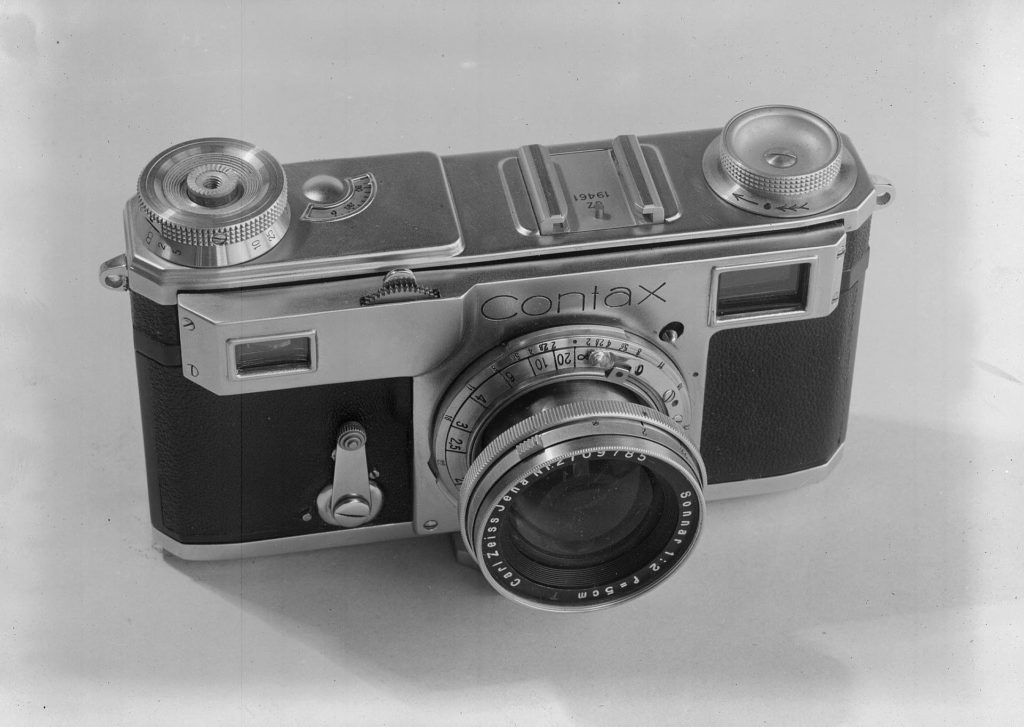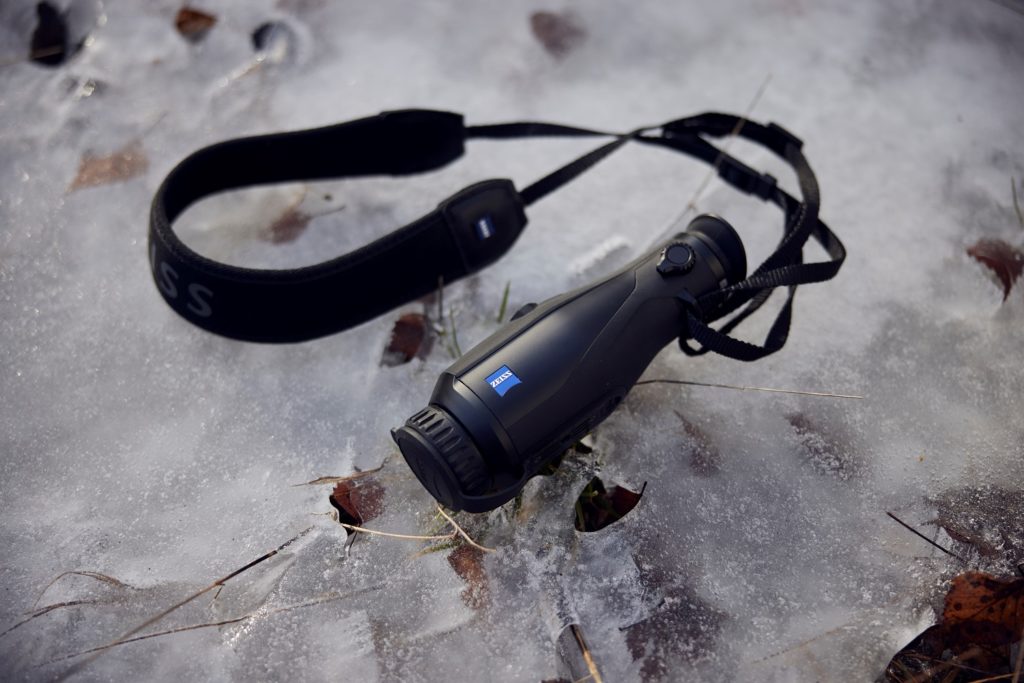The Result of 130 Years of Expertise in Hunting and Photography
On the occasion of the company’s 175th anniversary, ZEISS is offering an exciting look back and forward in a series of articles on the company’s history and its influence on the development of innovations and today’s technologies in the fields of hunting and nature observation.
It is no coincidence that ZEISS is a pioneer in the field of optical devices for wildlife observation and ethical hunting. Science and innovative technologies, but above all the company’s close relationship with passionate hunters, repeatedly lead to groundbreaking developments, such as those we have already been able to learn about in the previous articles in this historical series. Across the globe, binoculars and riflescopes from ZEISS, for example, are considered the brightest on the market and offer a decisive advantage on the hunt, especially in difficult lighting conditions.
With the introduction of the first ZEISS thermal imaging camera, the ZEISS DTI 3/35 (in 2020), the pioneer in the field of optics has created yet another technical masterpiece. This is where expertise and knowledge from two different areas of the company come together. This is because ZEISS has 130 years of expertise in the field of hunting and just as much experience in photography, lens development, and imaging – a decisive advantage when developing a thermal imaging camera, since it is a digital camera in the broadest sense. The difference is essentially only that a thermal imaging camera doesn’t have a light-sensitive sensor, but instead what is known as a bolometer, which converts infrared radiation into a visible image. The other components are similar to those found in a digital camera, allowing ZEISS to draw on its experience in this field dating back to 1899, when ZEISS first began manufacturing cameras, through the development of the 35mm Contax camera, or the ZEISS Ikon in the 1930s. The very first ZEISS photographic lenses from the 1890s also stood out for their brightness and precise image reproduction.
Today’s thermal imaging cameras allow us to detect animals concealed in darkness that would be invisible to the naked eye. Hardly any other kind of hunting places such high demands on the hunter’s skills and equipment as hunting for wild boar at night. Thanks to its high-resolution HD-LCOS display, the ZEISS DTI 3 family delivers high detail precision as well as the ability to finely and gradually adjust the digital zoom. This allows the hunter to accurately identify the target and take aim to ensure that the shot is safe and ethical.
Historical expertise and knowledge from the fields of photography, lens development, and imaging are combined with years of hunting experience during the development of ZEISS thermal imaging devices (left: Contax; © ZEISS Archive – right: ZEISS DTI 3/25)
The ZEISS DTI 3 owes its detailed imaging to, among other things, the perfect compatibility of the hardware components consisting of the lens, high-sensitivity sensor, display, and eyepiece, as well as the device’s internal signal processing, which ultimately determines the visible image quality and the ability to recognize the relevant details – a combination that ZEISS has already been able to demonstrate in lens and camera development and ensures that images are precise and reliable.
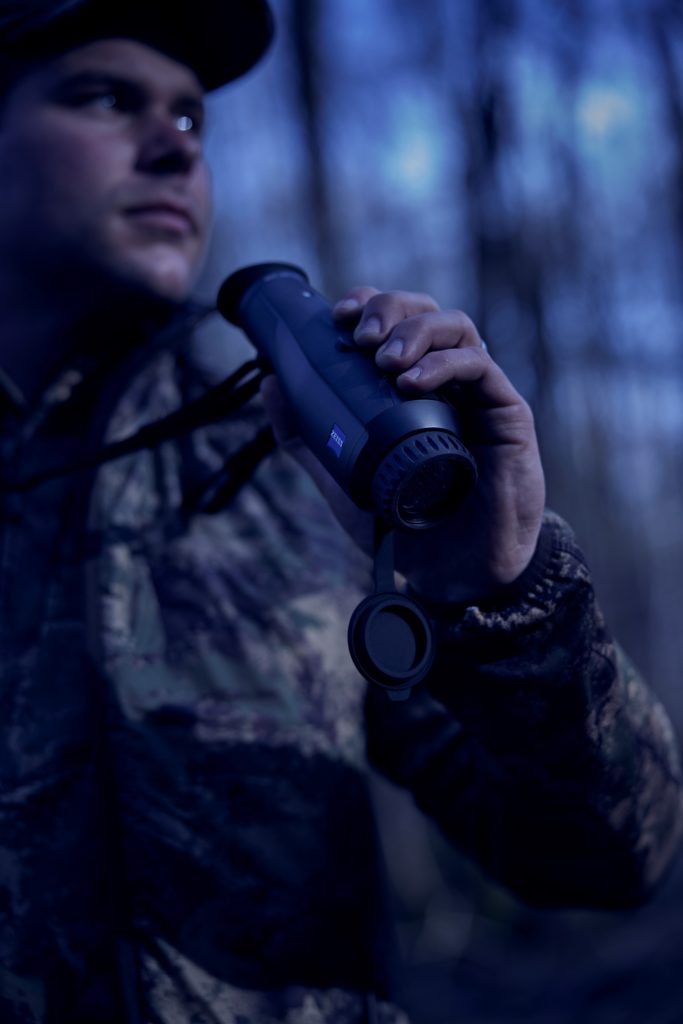
Furthermore, it also features an outstanding ergonomic design that enables its intuitive operation. Intuitive operation is not only helpful in photography – when hunting, both the weapon and the optical device have to be operated virtually blind, meaning that intuitive operation can sometimes be the deciding factor in the success or failure of a hunt. ErgoControl is the name of the innovative concept. The control buttons are arranged in such a way that the user (no matter whether right-handed or left-handed) always knows exactly which button they are pressing. Each button also features a different shape – so you can always find the right button, even when wearing gloves.
The release of the ZEISS DTI 3/25 marks the second thermal imaging camera developed by ZEISS specifically for hunting at shorter distances. With a focal length of 25 millimeters, it delivers a magnified field of view of 26 meters at 100 meters. This is where ZEISS benefits from its years of experience in the development of wide-angle lenses for photography and filmmaking. The angle of view of most wide-angle lenses is larger than that of the human eye. As a result, another area is visible in the image. This is also a significant advantage for hunters, as it gives them a broad overview and allows them to detect and localize the game population in their vicinity.
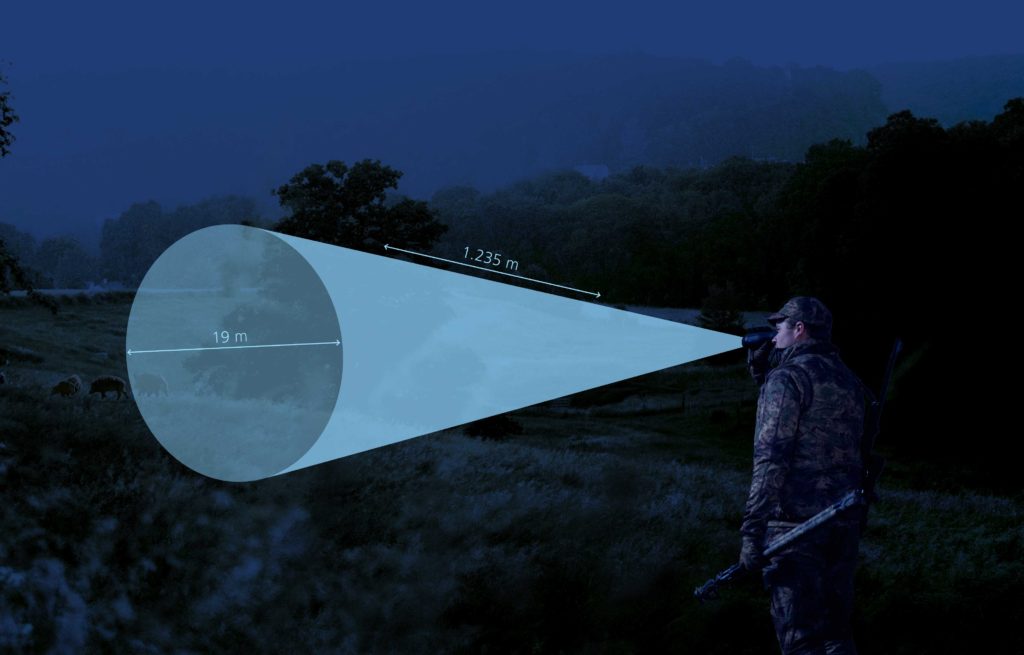
ZEISS DTI 3/35 field of view 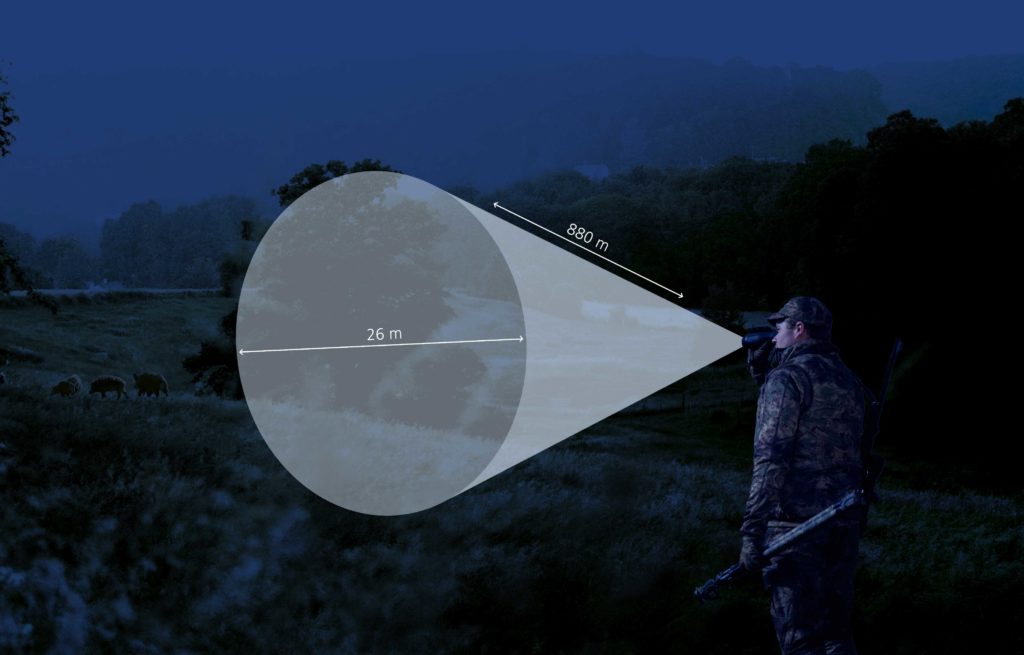
ZEISS DTI 3/25 field of view
Our look back at the company’s history – starting in a small workshop in Jena, through key inventions and developments not only in the field of hunting, to new digital concepts and further advancements – shows that ZEISS’ broad and cross-sector expertise in the fields of microscopy, photography, and observation optics continues to deliver innovative products that accompany hunters on their hunt (including at night) …
And that’s not the end of the story by a long shot. ZEISS’ innovative spirit remains as strong as ever! ZEISS continues to invest heavily in research and development, meaning that further exciting technological breakthroughs for hunting can be expected in the near future…
